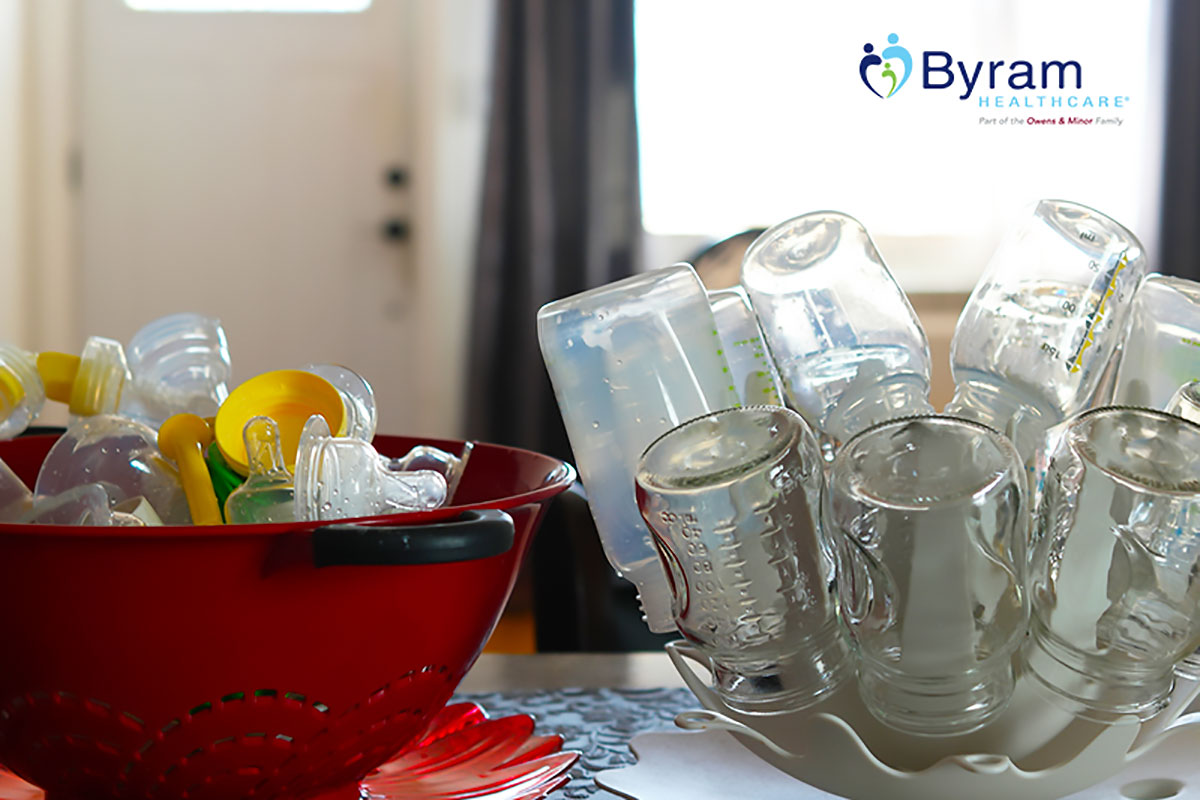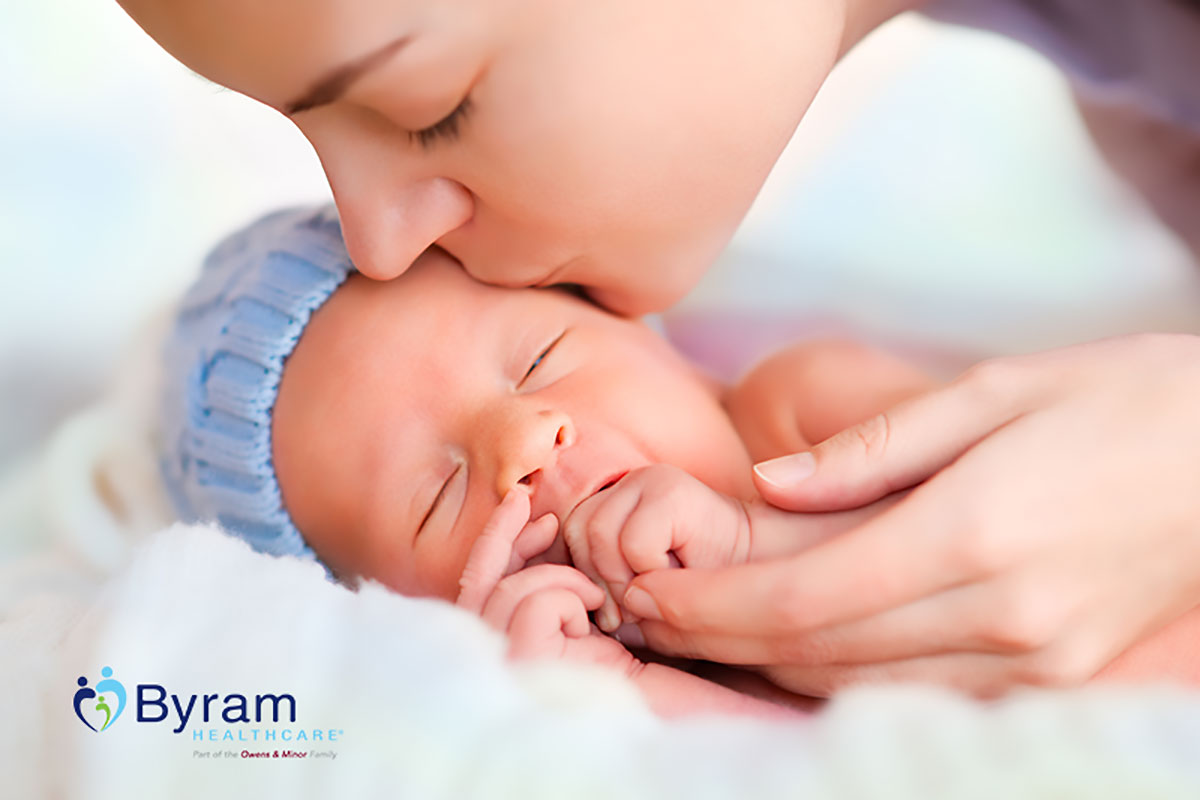Comprehensive Guide to Cleaning Your Breast Pump
As a new mom, one of the best things to do for your newborn is to breastfeed. It’s the best way to deliver all of the nutrients your baby needs to stay healthy during development. Not to mention, it allows you to bond with your baby in ways you’d never imagine. It delivers optimal skin-to-skin contact and allows some much needed quiet, one-on-one time. However, it’s unrealistic to breastfeed your baby at every single feeding. That’s why most new moms opt for a breast pump to supplement nursing with feedings from their partner or a trusted babysitter.
Breast pumping is a great way to give your partner a chance to bond with the baby and to split up night shifts. This means you’ll need to endure some labor-intensive pumping sessions with your preferred breast pump.
The frequency of your pumping will depend on your needs, but it is crucial to make sure and clean your breast pump thoroughly and correctly after each use. Otherwise, germs will accumulate and are then easily transferred to your baby.
With this comprehensive guide to cleaning your breast pump, you’ll be able to protect your baby from dangerous germs and still deliver a healthy meal filled with the natural nutrients found in breast milk.
The Importance of Cleaning Your Breast Pump
We’ll say it again and again until it sticks; cleaning your pump is absolutely essential. There are no ifs, ands, or buts about it. If you don’t think you have the time to clean your breast pump after each use and regularly, then don’t use one.
Your breast pump will come in direct contact with your breast milk. Breast milk is healthy when consumed immediately or safely stored and reheated. However, when it sits at room temperature it becomes a perfect breeding ground for germs and bacteria. Too high of an exposure to germs and bacteria are dangerous to newborns, especially while they’re still developing their immune system.
For instance, there have been cases of severe infections contracted through dirty breast pumps that’s led to brain damage, cerebral palsy, and developmental delays in newborns and babies.
It doesn’t matter how busy you are, if your breast pump has come in contact with your skin and/or milk, it needs to be cleaned!
Cleaning Tips: Before Using Your Breast Pump
Cleaning your pump after each session means that you won’t need to get down and dirty again before using your pump. But you will want to take a few preliminary precautions. Make sure you and your environment are clean and follow these steps.
Wash Your Hands!
To start every pumping session, it’s important that you first wash your hands. With or without a newborn around, your hands pick up thousands of germs in a mere millisecond. Giving them a good scrub before starting your pumping session will ensure they’re clean and germ free.
Assemble Your Pump
Before you clean a pump it will need to be disassembled. Leave it like that in between cleanings so it dries well and doesn’t retain unnecessary moisture. This means that before each session you’ll need to reassemble your pump.
This shouldn’t be too hard, but it’s a great time to keep an eye out for any moisture that may have accumulated over night or since your last session. Inspect the pump kit and tubing for mold and if you find any, discard it immediately.
Wipe it Down
If you haven’t pumped in a while, give it a good wipe down before using it to remove any dust, germs, or other debris that may have accumulated since your last session. Wipe down any dials and switches with a disinfectant wipe to avoid transferring germs from external pump parts to your supply.
Cleaning Tips: After Using Your Breast Pump
According to the Center for Disease Control and Prevention, the first thing you need to do after pumping is to store your milk safely. Don’t worry about cleaning yet—this is more important. Cap or seal your milk collection, label it with the date and time, and put it into your refrigerator, freezer, or cooler with ice packs.
Doing this immediately eliminates any concern or possibility for the accumulation of bacteria and germs.
After storing your supply, it’s time to start cleaning your pump.
Clean the Pumping Area
Similarly to wiping down your pump before use, do it again afterwards. Focus on the dials and power switches, especially if you’re sharing a pump. Before taking things apart, you’ll also want to clean and disinfect the countertop or the surrounding area where you’ve been pumping.
Take Apart Your Pump
Next, take apart your breast pump. Depending on what kind of pump you use, the disassembly will change. To make sure you’re doing things correctly, follow the manufacturers instructions. Remove all of the breast pump tubing and parts that come in contact with your breast or any breast milk, which includes:

- Flanges
- Valves
- Membranes
- Connectors
- Tubing
- Breast milk bottles
Rinse the Pump
Thoroughly rinse each part of the pump kit you’ve disassembled. This aims to remove any remaining milk and to prepare you for the actual washing. Use warm, running water to rinse.
Clean the Pump by Hand
There are two options to wash your pump kit: either by hand or in the dishwasher. Use the recommendation provided by your breast pump manufacturer to determine which way is best for you.
If washing by hand, you’ll need to use a wash basin that’s used only for washing your baby’s feeding accessories. This helps avoid cross-contamination that often occurs when using a regular kitchen sink.
Fill the basin with hot water and add soap before scrubbing each individual item using a brush that has been isolated for cleaning pumping items. Again, cross-contamination is a real thing so using products that only touch your pump and feeding supplies is a great way to avoid unnecessary contact with germs.
Rinse each part under running water and allow them to air-dry on a clean towel in an area that won’t be exposed to new germs, dust, or dirt.
Clean the Pump in a Dishwasher
If your pump needs to be washed in the dishwasher, start by disassembling everything. Place all of the items in the dishwasher and run a cycle using hot water. If possible, use the heated drying cycle or a sanitizing setting to kill more germs.
Next, wash your hands and remove everything from the dishwasher. If items are completely dry, put them directly into storage. Otherwise, set them aside to air-dry in the same manner as if you were hand washing.
Wash Basin and Brushes
If you hand washed your pump, you’ll also need to clean the basin and even the bottle brush. Wash them regularly and keep them isolated during drying. If possible, run them through the dishwasher every few days or sanitize them for extra protection.
Sanitize
For the best germ protection possible, sanitize your pump at least once a day, especially if pumping multiple times. This helps eliminate any dangerous germs that are especially harmful for newborns or babies with a weakened immune system.
To sanitize, clean the breast pump parts as you normally would and then use one of two methods. Steaming is possible depending on the model, but make sure to follow directions according to your pump’s manufacturer’s suggestions; otherwise you will need to boil the items.
To boil, simply place all of the disassembled parts in a pot of water and bring it to a boil for 5 minutes. Allow everything to safely air dry and then put them away in a safe storage area.
For more information, or a printable guideline to keep handy in your kitchen, check out the CDC’s quick fact sheet document. Store everything in a clean and protected area to avoid any contamination.
Conclusion
A lot of new moms struggle with breastfeeding at first. It’s a roller coaster of ups and downs and sometimes it’s frustrating, stressful, and even discomforting. Eventually, you’ll get the hang of it and will come to love these moments. However, you need to take proper breastfeeding hygiene care, so why would you not do the same for your breast pump? Use this comprehensive guide to clean your breast pump according to the CDC’s guidelines and you and your bundle of joy will stay safe and healthy during the process. If you have any questions about breastfeeding, talk to your doctor today or find a latching consultant today. Thanks to the Affordable Care Act, new mothers are eligible to receive an electric breast pump covered by their insurance provider. Plus, some insurance companies will even help cover the cost of a latching consultant. Check with your provider and shop our selection at Byram Healthcare to find something that works for you.
If you have any fun stories, tips, or questions about cleaning your breast pump, head over to our Facebook page today and share! Our community of mothers and mothers-to-be love hearing from each other.






